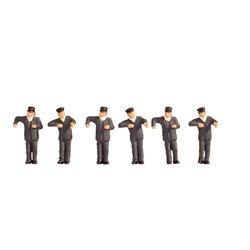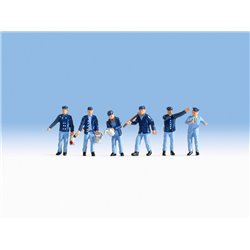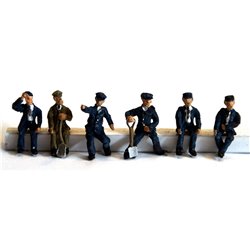There is a slight difference is size but both run on the same width track (16.5mm). As for the scale, OO Scale is...
No products
Product successfully added to your shopping cart
There are 0 items in your cart. There is 1 item in your cart.
Search Tips
Can I use HO gauge figures on an OO scale layout?
Yes, you can use HO figures on your OO scale layout, there is a slight difference in size, but this is negligible in the grand scheme of things.
HO gauge is 1/87th that is 3.5mm to the foot, where as OO scale is 1/76th, that is 4mm to the foot. So HO is very slightly smaller but an example may help understand better:
In OO gauge, a typical 6ft tall man (1.80m) would be about an inch (24mm to be exact), in HO, the same man would be 21mm. The same 21mm tall figure would represent a man who is 1.60m (5ft 4in) tall.
As we are all different shapes and sizes, the difference in size does not really matter and it matters even less if you simply stick to one size on your layout, be it HO or OO.
I usually make sure that HO gauge figures and OO gauge figures are not next to each other to avoid any obvious visual clash but apart from that, I am happy to mix them on a layout.
Click here to receive the tips weekly in your mailbox. You can unsubscribe at any time.










